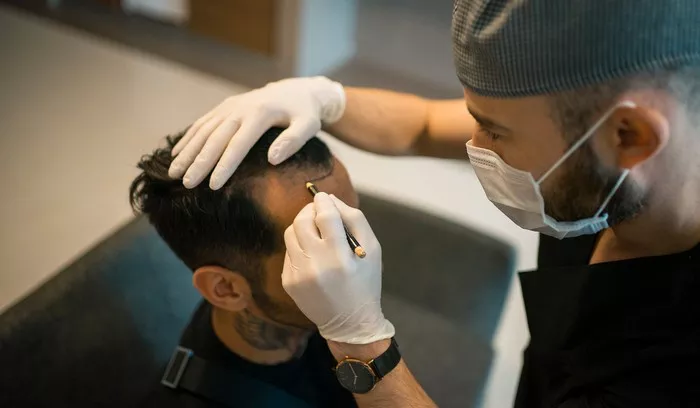Hair transplants have gained immense popularity as an effective solution for hair loss, helping individuals regain their confidence and restore their natural hairline. Following a hair transplant, many patients explore additional treatments to enhance and maintain their results. One such treatment is finasteride, a medication commonly prescribed to prevent further hair loss and promote hair regrowth. However, the timing of when to start finasteride after a hair transplant can be confusing. This article will clarify the role of finasteride, its benefits, and the best timing for starting this medication post-surgery.
Understanding Finasteride
What is Finasteride?
Finasteride is an oral medication that inhibits the action of the enzyme 5-alpha-reductase. This enzyme converts testosterone into dihydrotestosterone (DHT), a hormone that plays a significant role in male and female pattern baldness. By reducing DHT levels, finasteride can slow hair loss and promote regrowth in individuals experiencing androgenetic alopecia.
Benefits of Finasteride
Prevention of Hair Loss: Finasteride is effective in halting the progression of hair loss, especially in those with a genetic predisposition to baldness.
Improved Hair Density: Many users report an increase in hair density and thickness, enhancing the overall appearance of their hair.
Convenience: Finasteride is taken orally, making it easy to incorporate into a daily routine.
Side Effects of Finasteride
While finasteride is generally well-tolerated, some individuals may experience side effects, including:
Decreased libido
Erectile dysfunction
Ejaculation disorders
Breast tenderness or enlargement
It is essential to discuss these potential side effects with your healthcare provider before starting the medication.
Timing: When to Start Finasteride After a Hair Transplant
Understanding the Hair Transplant Recovery Timeline
To determine the best time to start finasteride, it’s crucial to understand the hair transplant recovery process:
Days 1-7: The initial healing phase where the scalp may be tender, swollen, or red.
Weeks 2-4: The transplanted hair may begin to shed, which is a normal part of the hair growth cycle.
Months 3-6: New hair growth starts to appear as the follicles enter the anagen phase.
See Also: When Can I Wear a Helmet After a Hair Transplant?
Consulting with Your Surgeon
Before starting finasteride, it’s vital to consult with your hair transplant surgeon. They can provide personalized advice based on your unique case and recovery progress.
General Recommendations for Starting Finasteride
While specific recommendations may vary, the following timeline is commonly suggested:
Immediately After Surgery: Most surgeons recommend avoiding finasteride for the first week after surgery to allow the scalp to heal without the influence of medications that can affect hormones.
Weeks 2-4: You may consider starting finasteride during this period, depending on your recovery and your surgeon’s advice. By this time, the initial healing should be well underway, and the risk of complications from starting finasteride is minimized.
Month 3: For many patients, starting finasteride around three months post-surgery is considered ideal, as this coincides with the beginning of new hair growth.
Long-Term Use of Finasteride
Once started, finasteride is typically taken continuously to maintain its benefits. Stopping the medication can lead to the resumption of hair loss. It’s essential to adhere to the prescribed regimen and attend regular follow-up appointments to monitor progress.
Factors Influencing the Decision to Start Finasteride
Individual Healing Progress
Each person’s healing process is unique. Factors such as age, overall health, and adherence to post-operative care can influence when it is safe to start finasteride. Listen to your body and follow your surgeon’s guidance.
Severity of Hair Loss
If you have a significant history of hair loss or are at a high risk of further thinning, your surgeon may recommend starting finasteride sooner to maximize its effectiveness.
Personal Preference and Concerns
Consider your comfort level with potential side effects and your desire for hair restoration. Discussing concerns with your healthcare provider can help you make an informed decision about when to start finasteride.
Conclusion
Starting finasteride after a hair transplant can be a valuable step in enhancing and maintaining your results. While the general recommendation is to wait at least one week post-surgery before beginning the medication, the timing may vary based on individual recovery and surgeon recommendations. Always consult with your hair transplant surgeon to create a tailored plan that considers your specific situation.
By understanding the role of finasteride and when to start it, you can make informed decisions to achieve the best possible outcomes from your hair transplant. Remember, patience and proper care are vital components of the hair restoration journey, ensuring you can enjoy a fuller, healthier head of hair for years to come.
You Might Be Interested In
- When Can You Eat Non-Vegetarian Foods After a Hair Transplant?
- When Can I Start Sweating After a Hair Transplant?
- Combing Your Hair After a Hair Transplant: When to Do It


